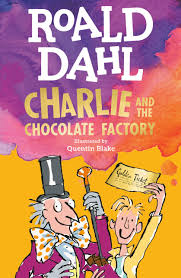Book Summary
Roald Dahl’s Charlie and the Chocolate Factory follows young Charlie Bucket, a boy living in poverty with his parents and four bedridden grandparents. When the reclusive chocolatier Willy Wonka announces a contest—five golden tickets hidden in his chocolate bars grant access to his mysterious factory—Charlie’s life changes forever. Against all odds, he wins the final ticket and embarks on a surreal tour alongside four spoiled children, each meeting ironic fates due to their vices. Dahl’s vivid imagination shines through edible landscapes, Oompa-Loompas, and Wonka’s eccentric inventions, creating a world that feels equal parts enchanting and cautionary.
First published in 1964, the novel balances dark humor with heartwarming moments, culminating in Charlie’s reward for his kindness and resilience. While the story is a fantastical adventure, its underlying commentary on greed, parenting, and socioeconomic disparity resonates across generations. Quentin Blake’s iconic illustrations amplify the whimsy, making it a visual and literary treat.
Key Themes
Dahl weaves sharp social critique into the candy-coated plot. The stark contrast between Charlie’s impoverished but loving home and the excesses of the other children (Augustus Gloop’s gluttony, Veruca Salt’s entitlement) highlights themes of gratitude versus greed. The Oompa-Loompas’ songs serve as moral lessons, mocking bad behavior with playful rhymes. Dahl doesn’t shy from depicting Charlie’s near-starvation, grounding the fantasy in real-world struggles.
Another central theme is the consequences of poor parenting. The spoiled children reflect their parents’ indulgence, while Charlie’s humility stems from his family’s empathy. Wonka’s factory becomes a metaphorical trial where virtues are tested—a modern fairy tale with a clear moral compass, albeit one that sparks debate about its portrayal of body image (e.g., “fat” as shorthand for greed) and colonial undertones in the Oompa-Loompas’ origin.
What Makes It Unique
Dahl’s signature blend of whimsy and darkness sets this book apart. The factory’s wonders (chocolate rivers, gum-meals) are undercut by the children’s grotesque punishments—Violet Beauregarde bloats into a blueberry, Mike Teavee is shrunk by TV. This juxtaposition delights kids while unsettling adults, a hallmark of Dahl’s subversive style. The book’s economy of language also stands out; Charlie’s poverty is conveyed through sparse details like cabbage soup and a single birthday chocolate bar.
The unreliable charm of Willy Wonka adds layers. Is he a benevolent genius or a manipulative trickster? His indifference to the children’s misfortunes (despite their parents’ outrage) fuels interpretations ranging from satire to sheer mischief. Unlike the films, the book’s Wonka lacks backstory, leaving his motives deliciously ambiguous.
Reader Reactions
Generations praise the book’s timeless appeal. Parents note how it “sparks conversations about kindness and consequences” during read-alouds, while adults revisit it for nostalgia and Dahl’s wit. Many highlight Charlie’s quiet heroism: “He’s not saccharine—he’s a real kid who shares his birthday chocolate despite hunger.”
Critics debate its problematic elements, from fat-shaming to the Oompa-Loompas’ depiction. Some argue these reflect the era’s norms, while others appreciate modern adaptations addressing these issues. Despite this, the story’s core—hope rewarded—keeps it beloved. As one reviewer writes, “Dahl trusts kids to handle darkness, and that’s why his magic endures.”
About the Author
Roald Dahl (1916–1990) was a British novelist, fighter pilot, and spy whose darkly comic storytelling revolutionized children’s literature. Before writing classics like Matilda and The BFG, he survived WWII plane crashes and penned macabre adult short stories. His childhood—marked by strict boarding schools and a candy company’s taste-testing (Cadbury’s inspired Wonka’s factory)—deeply influenced his work.
Dahl’s distrust of authority and empathy for underdogs permeate Charlie. He once said, “Children are not fools. They can spot a moral lesson a mile off.” This book exemplifies his belief that kids crave both mischief and justice, making it a staple for rebellious young readers.
Memorable Quotes
“So please, oh please, we beg, we pray, go throw your TV set away, and in its place you can install a lovely bookshelf on the wall.”
“A little nonsense now and then is relished by the wisest men.”
